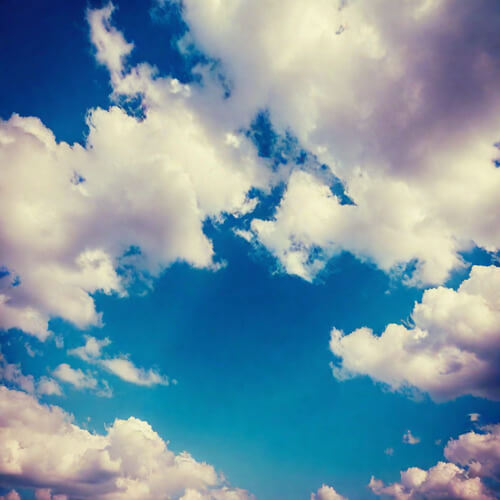Cloud Formations and The Water Cycle
19th Mar 2019
Condensation happens when water vapor transforms into a liquid, and it's how clouds are formed. Without condensation, the water cycle would not be in motion. The water molecules in water vapor are farthest apart and most randomly arranged, but as water vapor cools, the water molecules become more condensed and structured, forming clouds.
Condensation in the Air
Up in the sky, the temperature is lower. As water vapor cools down, it attaches itself to other particles to make cloud droplets. If the temperature drops further, the cloud droplets grow bigger and combine to form clouds. Cloud droplets can be as small as 10 microns or as big as 5 millimeters. When they become clouds, they become heavier and heavier until the saturation point, when they fall as rain or snow. This is known as precipitation.
- From Gas Into Liquid
- When a Cup Is Cold, Where Does the Water on the Outside Come From?
- Moisture, Condensation, and Precipitation
- What Is Condensation?
Why Is it Colder Higher Up?
The reason why the air gets colder at higher altitudes is air pressure. At sea level, the air pressure, the force exerted by the weight of the air on top of the ground, is approximately 14.5 pounds per square inch. At higher altitudes, there is less air pressure, so the density of the air decreases. As the air expands, it loses energy, and so the temperature drops.
Condensation on Earth's Surface
Fog is formed when air particles with a higher temperature interact with lower-temperature air. When the warmer air mixes with the cooler air, condensation occurs and fog develops. This is called advection fog. Another common type of fog is radiation fog, which is formed when the earth's surface becomes colder. As the ground cools, it radiates heat, making the air near the ground warm up and rise. This creates a cloud-like effect at ground level; the warm air traps moisture near the ground, rises as it cools, and condenses into fog.
Why Do Glasses Fog Up?
People who wear glasses usually find it harder to see when they go from a place with a lower temperature to a place with higher temperature. The fog on the glasses is formed by condensation as warmer water vapor comes into contact with the glasses, which are colder. When you exhale moist air on a window pane, it fogs up due to the same effect.
Cloud Formation and Rain
Water molecules can be found in many things, including air. As air rises, the temperature in the atmosphere drops, causing the water molecules to condense into liquid. With the aid of wind, clouds transport water to other places. Cloud droplets are formed when the rate of condensation is greater than the rate of evaporation. When the cloud droplets become heavy enough, they form raindrops.
What Is a Contrail?
Contrails are trails of cloud made by airplanes flying higher up in the sky. When the cold atmospheric air comes into contact with water vapor in a plane's exhaust, condensation happens, resulting in the formation of cirrus clouds.
How Do Clouds Float?
Some clouds are as heavy as 30 elephants, so one would think that they couldn't float. But while a cloud may be very heavy, it can also be very big, and spreading that weight over a large area gives it a low density.
Types of Clouds
Clouds can be formed in the low level, middle level, or high level of the atmosphere, and they come in different types depending on their characteristics. Low-level clouds that resemble puffs of cotton are called cumulus clouds. Middle-level clouds that look like blankets are called stratus clouds. Depending on the temperature, they can be quite stagnant. High-level clouds are often cirrus clouds. They look like the feathers of birds. Some other types of clouds are cirrocumulus, altostratus, and stratocumulus.
The Water Cycle
Whether it comes from a bottle or the river, all water has been recycled over millions and millions of years. This is the function of the water cycle, which consists of four stages. In the evaporation stage, water from lakes, oceans, and other bodies of water is transformed into water vapor by the sun's heat. Then, it rises up to the sky, where the temperature falls to the point that condensation happens, turning it back to liquid in the form of clouds. When the cloud droplets become heavy enough, they fall to the ground in the process called precipitation. In the collection process, water is channeled back to rivers, oceans, and ponds. Then, the cycle begins again.

